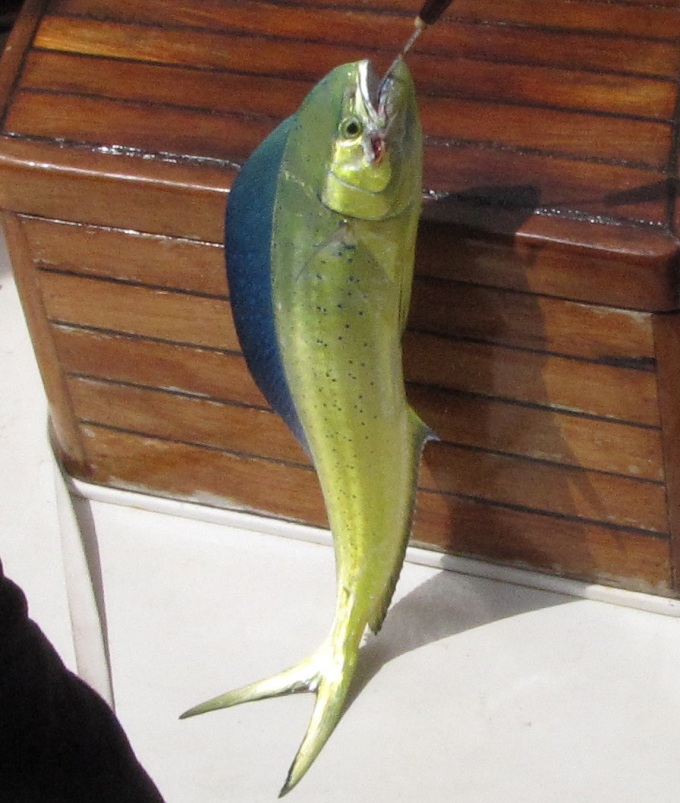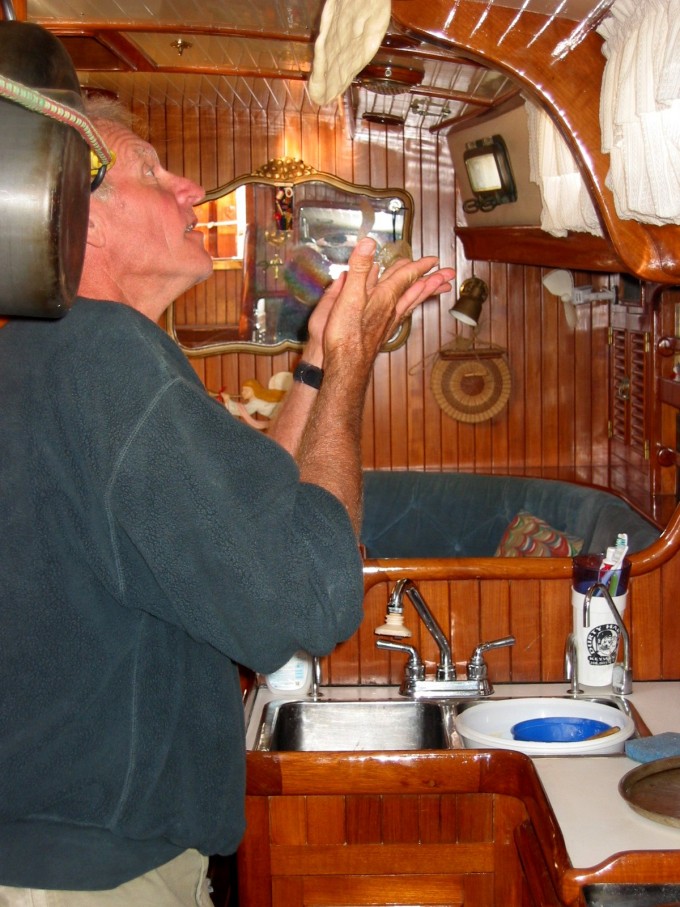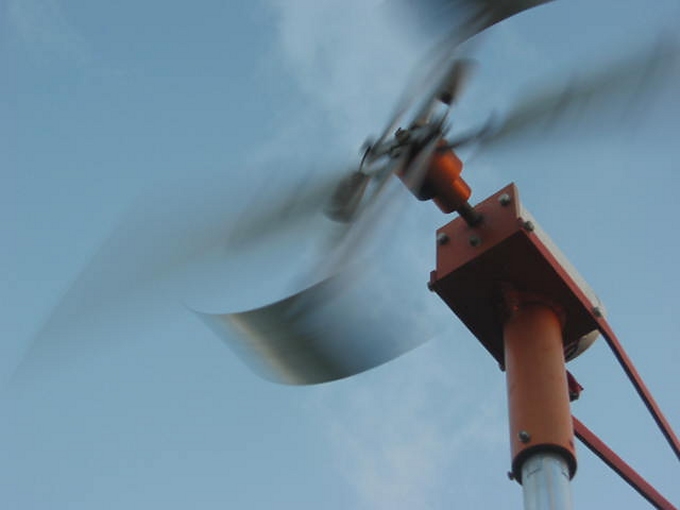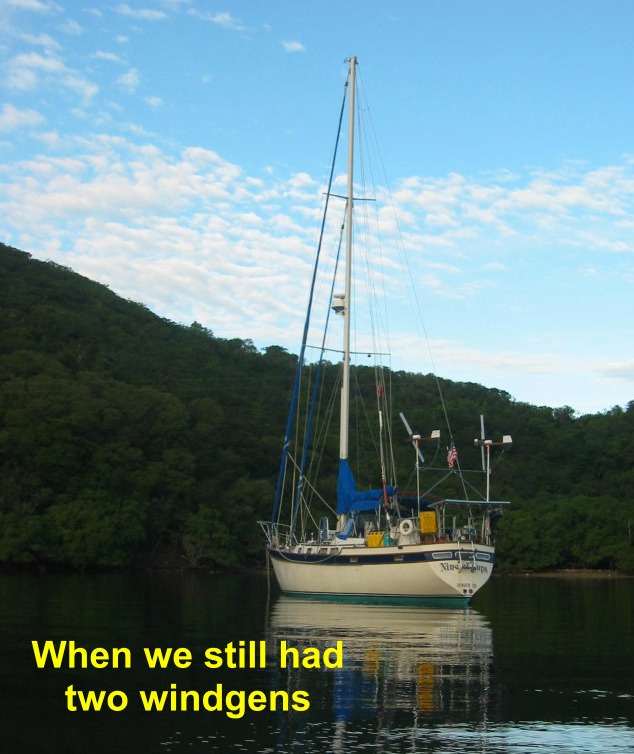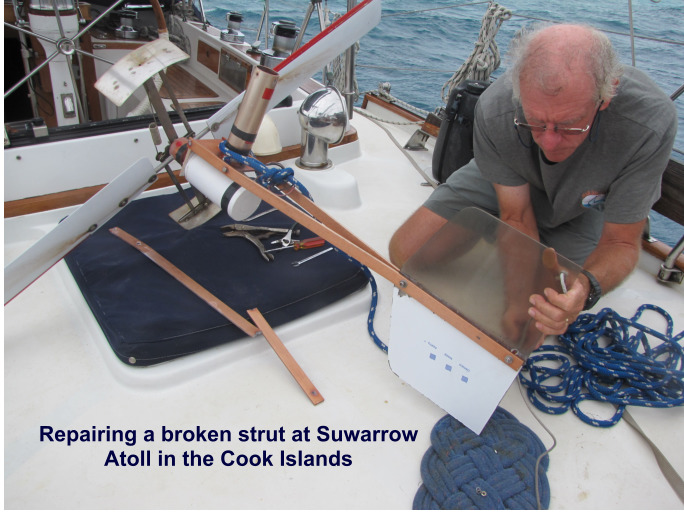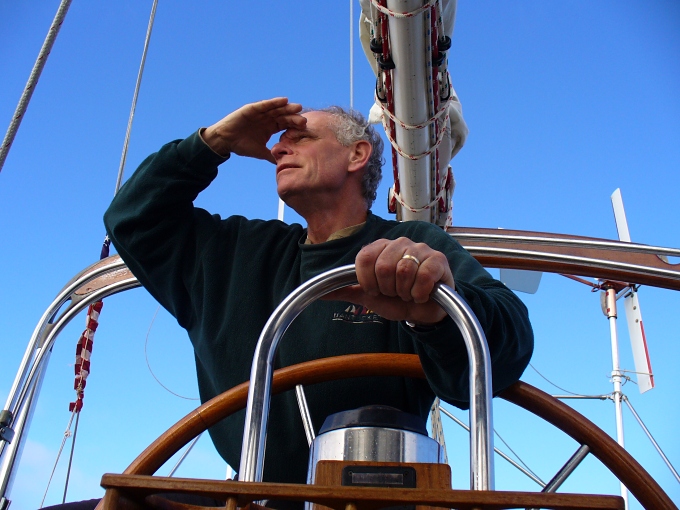FAQ - Do you cook any differently when you're on a passage?
/I do the bulk of the cooking aboard … in port or at sea. I'm asked frequently how our menus differ and how my cooking practices change when we're at sea. Quite honestly, the weather and what we have available in the ship's larder dictate what we'll have for meals and how much cooking I'll do. That said, meals are always an occasion when we're at sea. It's usually a time when we're awake and have a chance to keep each other company.
The first couple of days out are sometimes the roughest. I make a passage soup or meal before leaving port. If I'm not feeling well and up to cooking when it's meal time, there's always something ready to eat. If we're feeling okay, it's a lazy day for the cook.
In general, we eat lots of smaller meals while we're at sea. We usually have a granola bar with our morning cuppas. Breakfast is yogurt (I make it in advance), home made granola and fruit or, if it's cold, sometimes oatmeal. If it's particularly calm, we might have pancakes or French toast, but this is a treat, not a usual. Lunch can be a sandwich (grilled cheese, grilled cheese and tuna) or a wrap or soup.
I try to have lots of fruit aboard so we can munch on apples, pears, nectarines or whatever is available at the local market that will hopefully keep for a longer voyage. Fruits don't require cooking which make them ideal for the cook. Long-lasting veggies include cabbages, potatoes, carrots, butternut squash and onions. They all swing in the hammock until they're used.
Dinner is most always a hot meal. I list the possibilities and David usually decides what he's in the mood for. (I obviously only list the choices that I'm in the mood for, too.) We have about 10 different menu options that are easy to make and easy to clean up after and we tend to alternate through them as we go, always leaving room for some imagination if the spirit moves me. Cottage pie, chili and pasta with homemade sauce all top the list although we tend to avoid “spicy” if the seas are up. Rice is a common side dish.
We usually eat in the cockpit and our meals are almost invariably served in big wooden bowls. It's easier to contain the contents and nothing rolls off the plate when we rock and roll. Plus, wood is a good insulator against heat if you're holding the bowl in your lap.
If David catches a fish, we have fish for the next couple of days until it's gone. We try to have one or two meatless meals during the week … omelettes or Fettucine Alfredo, for instance. Remember, I can chicken and mince (turkey burger), so the meats are all cooked in advance. They keep for years without refrigeration and they're always ready to add to any recipe.
Once I'm feeling okay and the weather's conducive to being in the galley, there's no limit to what I can whip up. Ingredient availability is always an issue, but I've become particularly good at substitutions. It's important to be resourceful when you can't just jump in the car and go to the store for the ingredient you're missing.
David's a bread maker and, if we're on a longer passage, he'll often have bread rising when I get up for my morning watch. He's even tossed a pizza a few times. I make coffee cakes, scones, cupcakes and brownies quite often. Baking on passage is not a problem although on occasion we've had cakes that have quite a list to them.
So … long answer to a short question … once we've got our sea legs, it's business at usual unless the weather's bad. Then, peanut butter and jelly sandwiches are on the menu. Otherwise, it's eat … eat … eat!




